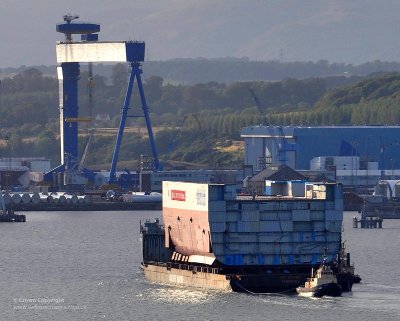 Like most other government departments, the Ministry of Defence has not been spared George Osborne’s axe, and plans to procure two new large aircraft carriers have been significantly affected. In light of a new government report on their construction, Chris Brown finds that we may be about to build carriers only to put them straight into mothballs, and that we may have traded short term savings for long term capabilities.
Like most other government departments, the Ministry of Defence has not been spared George Osborne’s axe, and plans to procure two new large aircraft carriers have been significantly affected. In light of a new government report on their construction, Chris Brown finds that we may be about to build carriers only to put them straight into mothballs, and that we may have traded short term savings for long term capabilities.
The Government’s plans for the future of Britain’s defences took another knock on Tuesday when Parliament’s Public Accounts Committee published its report into ‘Providing the UK’s Carrier Strike Capability’. I’ve blogged critically on this matter in the past, but it gives me no satisfaction to report that the situation is worse than anyone anticipated. In the words of the PAC’s Chair, Margaret Hodge MP:
Rather than two carriers, available from 2016 and 2018, at a cost of £3.65bn, we will now spend more than £6bn, get one operational carrier and have no aircraft carrier capability until 2020 – almost a decade.
Moreover, the carriers were built as a platform for one type of aircraft and now will have to be refitted to take another, at an unspecified cost and, taking this into account and the need to train a new generation of pilots, it could be 2030 before the one non-mothballed ship is fully operational. To add to the misery, the PAC report does no pick up on the American rumours that the carrier-based version of the F-35 stealth fighter, which is now the weapons system the carriers are being retrofitted to accommodate, may be cancelled.

The US currently intends to buy 2,400+ F-35s in their three different variants at a cost of over $300 billion dollars, the most expensive programme ever; the American defence budget is under almost as much pressure as the British, and this programme is very likely to be downsized. US planners may well feel that the life of the current carrier strike plane, the F-18, can be extended and the carrier based version of the F-35 cancelled. The Royal Navy will then have to decide whether it wants to try to buy F-18s for its new carrier (leading to another retrofit) or will settle for an inferior model – and the ageing Sea Harriers will not be available since they are currently being sold at a knock down price to the US Marine Corps!
The bottom line is that the decision taken in 2010 to proceed with the carriers was taken on the assumption that the cancellation costs would be as expensive as would be completing the construction – it now looks as if this is not the case. Although the actual construction of the two carriers is proceeding on time and to budget, the associated costs have risen. As the PAC’s Chair comments, ‘In preparing options, the Department concentrated on short-term affordability and the need to make cash savings, and did not focus strongly on long-term value for money.’
What should now be done? It seems to me that in the light of the report serious consideration needs to be given either to mothballing both carriers or to accepting that the one carrier that is eventually brought into service could simply be operated as a platform for helicopters. The RN would probably resist such a move and no-one would be able to pretend that this would be a good option – but it may be the least worse available.
Please read our comments policy before posting.







